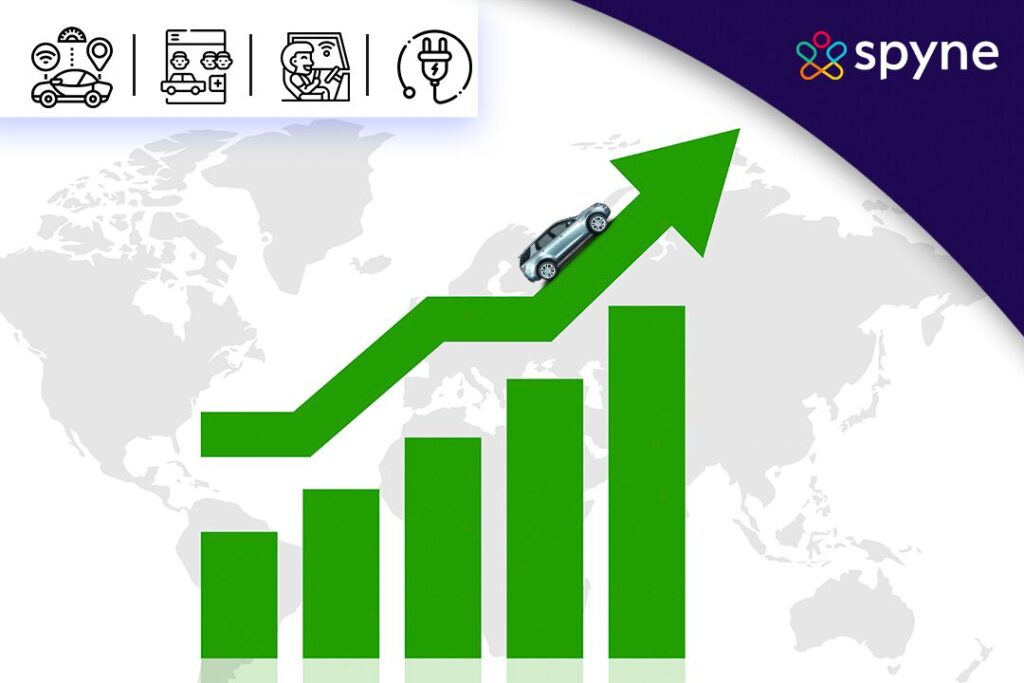BMW And Porsche's China Challenges: A Growing Trend In The Auto Industry

Table of Contents
Intensifying Competition in the Chinese Luxury Car Market
The Chinese luxury car market is a fiercely contested arena. BMW and Porsche, while established players, face immense pressure from both established international rivals and the rapidly ascending domestic brands. The battle for market share is brutal, demanding sophisticated strategies to maintain dominance. Key challenges include:
-
Rise of Chinese Luxury Brands: Domestic brands like Nio, Li Auto, and Xpeng are making significant inroads, offering compelling electric vehicles (EVs) with advanced technology and features tailored to Chinese consumer preferences. These brands often benefit from government support and a deep understanding of the local market. This presents a direct challenge to the established dominance of German luxury car brands in China.
-
Increased Price Sensitivity: While luxury car buyers in China are affluent, they are also increasingly price-sensitive. This necessitates strategic pricing and value propositions from BMW and Porsche to remain competitive against both domestic and international rivals offering potentially more affordable alternatives. Understanding the nuances of this consumer behavior is critical.
-
The Need for Localized Strategies: Simply exporting models designed for Western markets will not suffice. BMW and Porsche must adapt their offerings to align with the unique tastes and preferences of Chinese consumers. This includes features, design elements, and even marketing campaigns specifically tailored to the Chinese market. This necessitates significant investment in market research and localized product development.
The Electrification Push and its Challenges
The transition to electric vehicles (EVs) is accelerating rapidly in China, driven by government policies and growing consumer demand. For BMW and Porsche, this presents both opportunities and substantial challenges:
-
Development and Deployment of Charging Networks: The lack of widespread, reliable charging infrastructure remains a significant barrier to EV adoption. While both brands are investing in charging solutions, the scale of the challenge in China is immense, requiring substantial collaboration with government and private sector partners.
-
Demand for Advanced Battery Technology: Chinese consumers demand EVs with long ranges and advanced battery technologies. This requires significant investment in R&D and securing access to cutting-edge battery technology, a sector where Chinese companies are making significant progress.
-
Competition from Chinese EV Manufacturers: Domestic EV manufacturers are rapidly gaining ground, often supported by government subsidies and incentives. They can offer competitive pricing and technologically advanced vehicles, posing a direct threat to the market share of BMW and Porsche's EV offerings like the BMW iX and the Porsche Taycan in China.
Navigating Regulatory and Policy Changes
China's automotive industry is heavily regulated, and the regulatory landscape is in constant flux. BMW and Porsche must be agile and adapt swiftly to stay compliant and competitive. Key challenges include:
-
Compliance with Stringent Emission Standards: China's emission standards are becoming increasingly stringent, mirroring or exceeding Euro 7 standards. Meeting these standards requires significant investments in cleaner technologies and vehicle development.
-
Navigating Fluctuating Import Tariffs and Trade Policies: Changes in import tariffs and trade policies can significantly impact the profitability of importing and selling vehicles in China. BMW and Porsche must actively monitor and respond to these changes to avoid unexpected costs.
-
Adapting to Changing Government Incentives: Government incentives for EVs and other technologies are constantly evolving. BMW and Porsche must be adept at leveraging these incentives while adapting their strategies to any shifts in policy.
Supply Chain Disruptions and their Impact
Global supply chain disruptions, including the semiconductor shortage and disruptions to the availability of automotive parts, have significantly impacted BMW and Porsche's operations in China. This highlights the vulnerabilities of relying on complex global supply networks. The consequences include:
-
Impact on Production Timelines: The semiconductor shortage has led to production delays and impacted the timely delivery of vehicles to consumers.
-
Need for Diversification of Sourcing and Manufacturing: To mitigate future disruptions, BMW and Porsche must diversify their sourcing and manufacturing bases, reducing reliance on single suppliers and geographic locations.
-
Strategies for Mitigating Supply Chain Risks: Implementing robust risk management strategies, including inventory management, alternative sourcing plans, and closer collaboration with suppliers, is crucial for navigating future disruptions.
Conclusion
The Chinese automotive market presents a complex tapestry of opportunities and challenges for luxury brands like BMW and Porsche. Intense competition from both domestic and international players, the rapid electrification of the market, evolving regulations, and persistent supply chain disruptions all demand careful strategic navigation. To thrive in this dynamic environment, these brands must prioritize localization efforts, aggressively invest in electric vehicle technology and infrastructure, and build more resilient and diversified supply chains. Further research into the ever-changing dynamics of the BMW and Porsche China market is crucial to understanding future industry trends and competitive landscapes. Understanding and adapting to these BMW and Porsche China challenges will determine their future success in the world’s largest automotive market.

Featured Posts
-
 Trumps Immigration Policies Shattered Canadian Dreams Of Us Relocation
Apr 23, 2025
Trumps Immigration Policies Shattered Canadian Dreams Of Us Relocation
Apr 23, 2025 -
 Invesco And Barings Making Private Credit Accessible To All Investors
Apr 23, 2025
Invesco And Barings Making Private Credit Accessible To All Investors
Apr 23, 2025 -
 Chainalysis Expands Ai Capabilities With Alterya Acquisition
Apr 23, 2025
Chainalysis Expands Ai Capabilities With Alterya Acquisition
Apr 23, 2025 -
 M3 As Autopalya Hetekig Tarto Forgalomkorlatozasok
Apr 23, 2025
M3 As Autopalya Hetekig Tarto Forgalomkorlatozasok
Apr 23, 2025 -
 Elementary School Lgbtq Books Supreme Court To Decide On Parental Notification
Apr 23, 2025
Elementary School Lgbtq Books Supreme Court To Decide On Parental Notification
Apr 23, 2025
